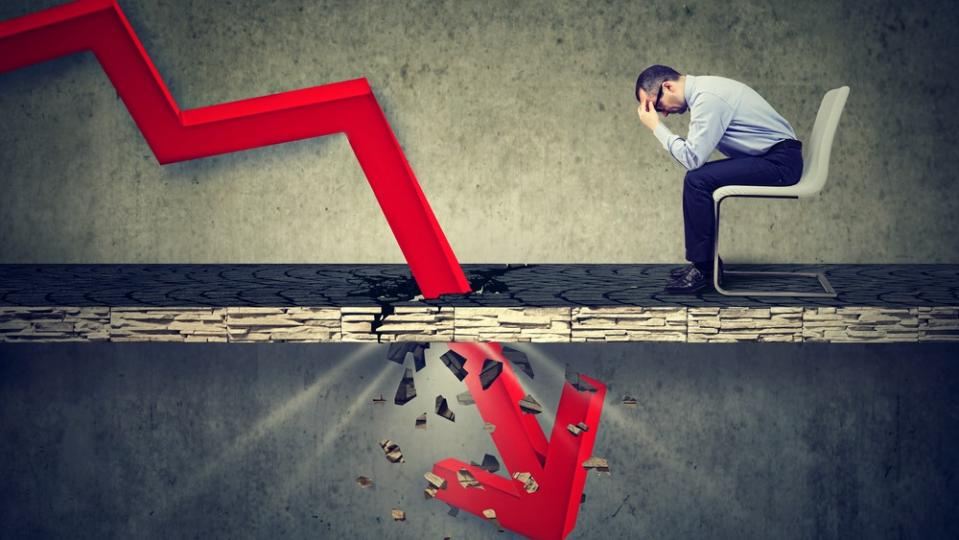How Bad Futures Bets Cost Nick Maounis His Hedge Fund

Risk management can be tricky for even the most seasoned and successful investors. When Long Term Capital Management (LTCM) collapsed in the early 1990s, the investment community was stunned because its management was highly regarded and its strategies were outrageously successful. But there’s an old saying in the investment world: “It works until it doesn’t.” And when the Russian economy tumbled in 1998, so did LTCM’s biggest bets.
Although it may be the biggest, LTCM is far from the only renowned hedge fund to bite the dust in the last few decades. But another surprising blowup occurred at Amaranth Advisors in 2006, and while the assets and investment models may have been different, the adage of “it works until it doesn’t” echoed through the passages between the two stories.
Don’t Miss:
Master And Apprentice
Nick Maounis was a rising star in convertible bond trading when he ditched the desk to start his hedge fund Amaranth Advisors in 2000. Maounis’s goal was to create a hedge fund with diverse strategies across several different markets (which makes the ending of this story all the more tragic). Starting with about $600 million in assets, Maounis grew his trading firm quickly and had amassed more than $7 billion by 2005.
Since Maounis courted the highest level clients for his fund, like Goldman Sachs and Morgan Stanley, he also wanted a team of top-notch talent at every trading desk. One of the pros he lured away from Deutsche Bank was futures trader Brian Hunter, who ran the firm’s natural gas trading desk. Hunter’s expertise in the natural gas futures market was rarely matched, and his results (at the time) spoke for themselves. Maounis quickly took notice of Hunter’s skills and allowed him to make natural gas futures bets with large amounts of Amaranth’s capital.
It Works Until It Doesn’t
Hunter’s trade was a bet that spreads between summer and winter natural gas futures contracts would widen. Historically, this trade was very successful as natural gas prices tended to rise in the cold winter months before softening with spring temperatures. Hunter would use a position known as a calendar spread to bet that the spread between March and April futures contracts would widen over time, allowing him to profit from the difference.
Hunter had tested his strategy over a decade, but just because a trade worked in the past doesn’t mean it’s guaranteed to work in the future. In 2006, the summer hurricane season was expected to be harsh, and gas producers were preparing for interruptions. Except it wasn’t harsh. The 2006 hurricane season proved milder than 2005, and natural gas producers faced few hurdles. Couple that with a mild Northeastern winter, and the spreads on natural gas futures narrowed swiftly — and destroyed Hunter’s capital in the process.
Since the previous versions of this trade were so successful, Maounis allowed Hunter to lever up using more than 50% of the hedge fund’s capital. And the result was disastrous. The trade lost $560 million on a single day in September 2006, and half of Amaranth’s assets went up in smoke in just two weeks. The fund needed to liquidate all other assets to meet margin calls, and Maounis emailed his employees in late September announcing that the fund was being shut down.
Maounis’s hedge fund committed one of the cardinal sins of investing: expecting the future to look like the past. The firm wasn’t prepared for a mild hurricane season or winter, and that single variable in the equation sank a $7 billion hedge fund in less than a month.
What lessons are there here for proprietary traders? Always consider risk management and position size when executing trades. What unusual variables or events could make the entire thesis wrong? How can you avoid losing too much capital when you inevitably get a trade wrong? Prop trading firms like TopTier Trader allow you to test your risk-management skills using simulated trading exercises. The best-performing traders move up until reaching the fully funded level, and best of all — the signup fee is fully refundable upon your first payout.
Read Next:
-
Find out how you can leverage up to $4,000,000 in capital with this prop trading firm – learn how.
-
Minimal rules, uncapped earnings’ Austin-based prop trading firm puts traders first and is growing rapidly. Learn how you can get in on the action.
“ACTIVE INVESTORS’ SECRET WEAPON” Supercharge Your Stock Market Game with the #1 “news & everything else” trading tool: Benzinga Pro – Click here to start Your 14-Day Trial Now!
Get the latest stock analysis from Benzinga?
This article Out Of Gas: How Bad Futures Bets Cost Nick Maounis His Hedge Fund originally appeared on Benzinga.com
© 2024 Benzinga.com. Benzinga does not provide investment advice. All rights reserved.

